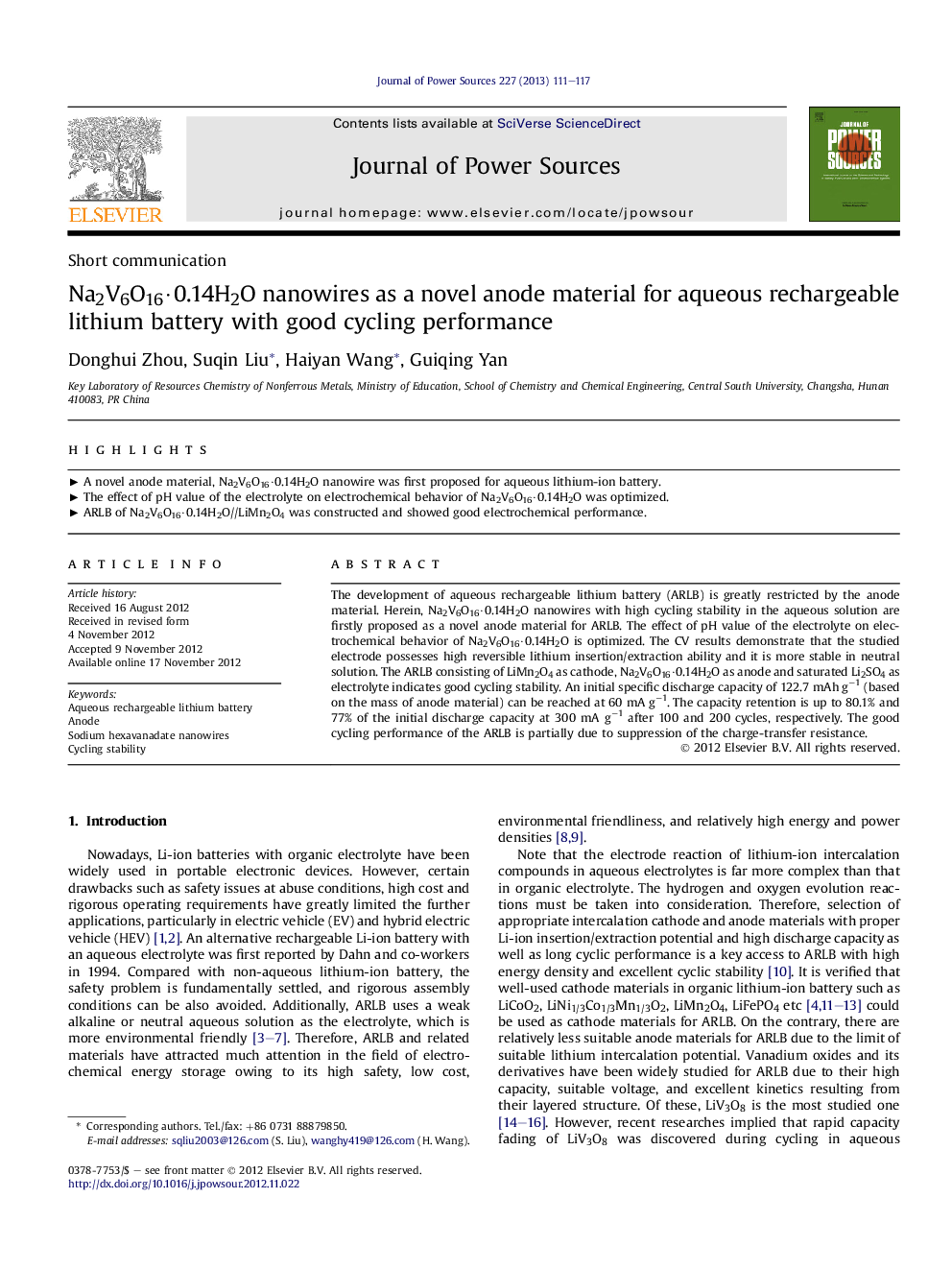| Article ID | Journal | Published Year | Pages | File Type |
|---|---|---|---|---|
| 1288295 | Journal of Power Sources | 2013 | 7 Pages |
The development of aqueous rechargeable lithium battery (ARLB) is greatly restricted by the anode material. Herein, Na2V6O16·0.14H2O nanowires with high cycling stability in the aqueous solution are firstly proposed as a novel anode material for ARLB. The effect of pH value of the electrolyte on electrochemical behavior of Na2V6O16·0.14H2O is optimized. The CV results demonstrate that the studied electrode possesses high reversible lithium insertion/extraction ability and it is more stable in neutral solution. The ARLB consisting of LiMn2O4 as cathode, Na2V6O16·0.14H2O as anode and saturated Li2SO4 as electrolyte indicates good cycling stability. An initial specific discharge capacity of 122.7 mAh g−1 (based on the mass of anode material) can be reached at 60 mA g−1. The capacity retention is up to 80.1% and 77% of the initial discharge capacity at 300 mA g−1 after 100 and 200 cycles, respectively. The good cycling performance of the ARLB is partially due to suppression of the charge-transfer resistance.
► A novel anode material, Na2V6O16·0.14H2O nanowire was first proposed for aqueous lithium-ion battery. ► The effect of pH value of the electrolyte on electrochemical behavior of Na2V6O16·0.14H2O was optimized. ► ARLB of Na2V6O16·0.14H2O//LiMn2O4 was constructed and showed good electrochemical performance.
